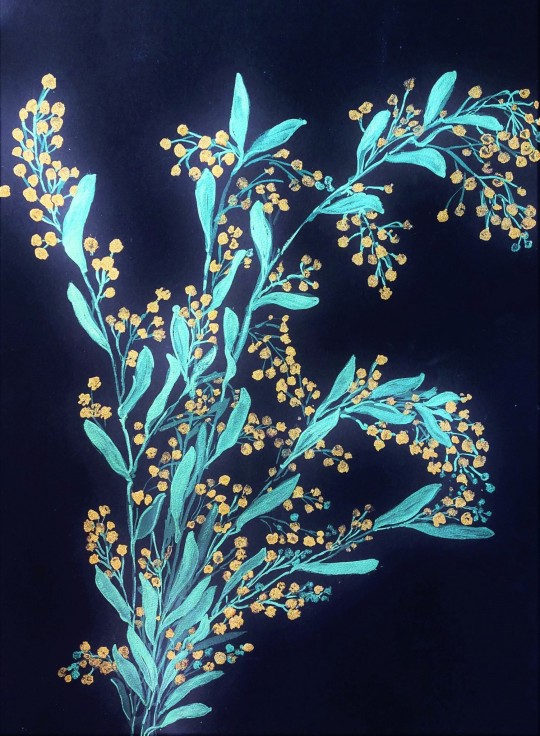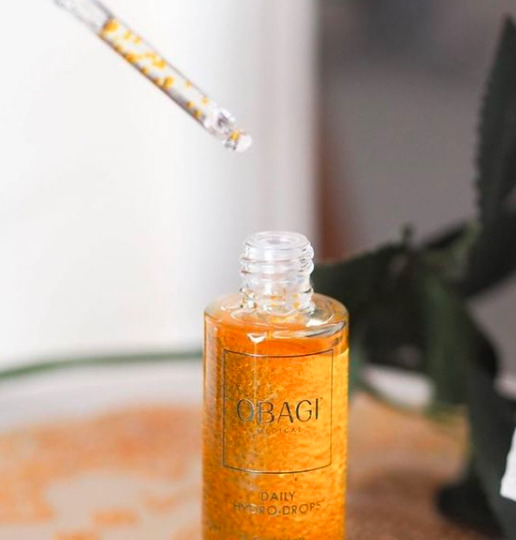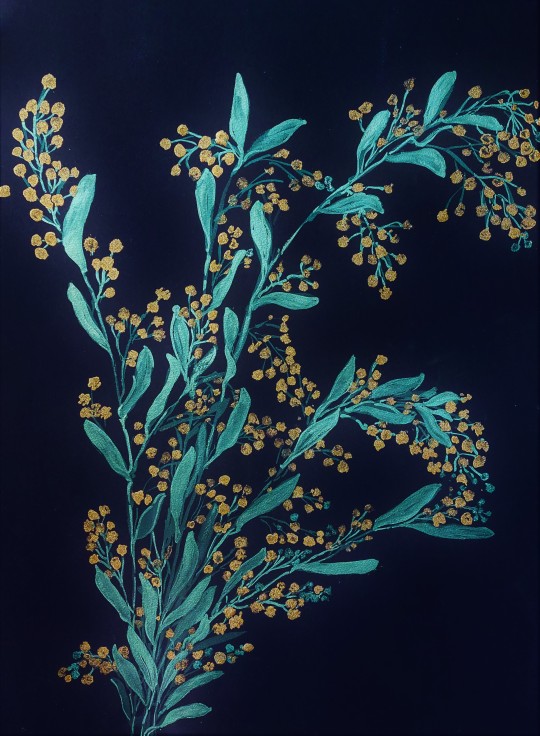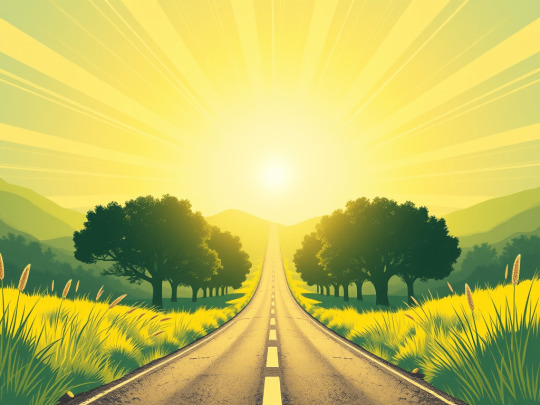#retinodes
Explore tagged Tumblr posts
Text

Wandering
Watercolor and Glitter On Black Cotton Paper
2023, 22" x 30"
Mimosa, Wattle, Acacia retinodes
#art#nature#flowers#trees#glitter#acacia tree#acacia#yellow#gold#minimalism#painting#watercolor#artists on tumblr#floral#artwork#artblr#creatrs#botany#wattle#australian plants#artist#plants#plantblr#original painting#sparkles#contemporary art#artworks#minimal#cottagecore#botanical
330 notes
·
View notes
Text

Acacia retinodes, le mimosa des quatre saisons ou mimosa d’été…
#photography#original photography#nature#corsedusud#original photography on tumblr#arbustes#mimosas#acacia
48 notes
·
View notes
Text
Retinodes Software Solutions Pvt. Ltd.
Retinodes Software Solutions Pvt. Ltd. is a Leading Software Development Company and Digital Marketing Company in Jabalpur. We Provide Best Software Solution Custom Software development, web design, Internet/Intranet applications and consulting services. The company has potential and experience in development of complex solutions for its customers implementation of concepts for data security, corporate and virtual private net-works, databases and software development.
#introduction#software company#developers#Company#web design#software solution#software Development company in jabalpur#software development Company in India#software Development#retinodes#retinodes Software Solutions
1 note
·
View note
Text
*stresses over my skin breaking out bc I’ve spent months curating a skincare routine and it’s frustrating that it doesn’t seem to be doing anything*
*realizes my skin is probably acting up bc I wore makeup for the first time in forever*
Me:

1 note
·
View note
Text
𝐒𝐞𝐫𝐮𝐦 𝐎.𝐛𝐚𝐠𝐢 𝐃𝐚𝐢𝐥𝐲 𝐇𝐲𝐝𝐫𝐨 is the ultimate skin-restoring water-restoring serum??
Not more or less she knows a whole rountine when she grinds O.bagi, it is definitely indispensable for this essence. Especially the use of BHA, Retinod, Tretinoin ... will cause the skin to lose water, lack of moisture, causing peeling, burning and redness is easy to see. Don't let the "makeover" process be interrupted when the most important recovery character is next to you
𝐎.𝐛𝐚𝐠𝐢 𝐃𝐚𝐢𝐥𝐲 𝐇𝐲𝐝𝐫𝐨 is a serum that combines Niacinamide and natural oil extracts, helping to deeply moisturize without reducing the penetration ability of topical treatments such as retinoids. Highly recommend for skins undergoing treatment.
She helps increase skin resistance, anti-inflammatory reduce swelling, restore damaged skin, fill wrinkles and treat acne dark spots. Skin is locked in moisture continuously, becomes tight, radiant, full of vitality.
In addition, her packaging is extremely luxurious, it is a glass bottle wrapped with sparkling gold crystals. When lightly touching the skin, it immediately breaks down and melts into a watery form, quickly absorbed into the skin, very pleasant.
The concentration of B5 is at a safe threshold, so it is safe and gentle, can be used in the morning before sunscreen or at night before Retinoids, Tretinoin to reduce flaking.
Pink house 𝖢𝗈𝗌𝗆𝖾𝗍𝗂𝖼 & 𝖲𝗄𝗂𝗇𝖼𝖺𝗋𝖾 - 𝖡𝖾𝗌𝗍 𝖡𝖾𝖺𝗎𝗍𝗒 𝖯𝗋𝗈𝖽𝗎𝖼𝗍𝗌



1 note
·
View note
Text
skincare tips
yeah, yeah, we all know to drink plenty of water, use sunscreen, don't wash with super hot water, and remove makeup before bed. here's some other things you can do to take care of your skin:
- wash your hands before you start!!!! basic hygiene people!!
- ditch the DIY. I know this is hard to hear, but that straight witch hazel you're putting on your face is going to be less effective than a clinically tested toner. and for the love of God, no more lemon and baking soda, please.
- that being said, invest in quality products. you don't need to go top of the line (nobody can afford that stuff anyway). find a middle ground. the same cleanser you've been using since high school isn't going to cut it for adult skin. stay away from anything with a TV commercial. skinceuticals is a solid mid-affordibility level brand I've had great success with. cerave is another hidden gem.
- find a routine and stick to it. consistency is your friend.
- alternate between types of products you need. for example, use acne reducing products by day, and anti aging or heavily moisturising products by night.
- change your pillowcase every 2 days, meaning use your pillow one way, flip it over for the next night, then change it. not only are you sweating (up to 4 cups a night) but also anything you've left in your hair (or even just the natural oils) are migrating to your pores.
- BE GENTLE. I CANNOT STRESS THIS ENOUGH.
- wash your face like you would wash your grandmother's face. use your fingertips, lather, MASSAGE.
- PAT your face dry. (stop rubbing!)
- when applying products, dab them on first in multiple spots, not just chin, cheeks, and forehead, but lots of little dots everywhere. rub the serum on your fingertips (to warm it, making spreading easier), dab, smear. easy.
- you dont have to work the products into your skin. you are not marinating a chicken. they will penetrate your pores just fine.
- wait 30 seconds between applying products.
- apply products thinnest to thickest. (yes, the old routine is still relevant. cleanser. toner. medication. serums - thin to thick. moisturizer. sunscreen.)
- if you are using a medicated cleanser, massage it into your skin and wait 30 seconds to a minute before rinsing.
- squirt sunscreen into your hand, rub your hands together (yes. all of it) then PAT the sunscreen onto your face. the warmth from your hands will spread it where it needs to go. (including your neck! and the back of it too! yes you!)
- your neck and decolletage dont need the same products as your face. a solid fragrance-free lotion will do. apply this day and night as the last thing you do.
- exfoliate only a few times a week, IF YOU MUST. the harder you are on your skin, the harder it will be on you. if you are exfoliating like crazy due to blocked pores, invest in an exfoliating serum, like salicylic acid, benzoyl peroxide, or a retinod. they will do the work more effectively for you.
- use an eye cream. I dont care if you are 20 or 40 or 80. put a small dot on your ring finger and dot the area beneath your eye, all the way up to the corner where crows feet start, then up onto the ridge bone (beneath your eyebrow). your eyes will give away your age before your neck, but regular, consistent use will also reduce dark circles.
- put deodorant on at night. you can reapply it in the morning if you want, but it penetrates more effectively when your sweat glands arent active.
- don't forget a lip balm. nobody likes chapped lips.
#1 takeaway: invest in yourself. treat yourself gently. be consistent.
remember, your skin is not only the face you present to the world, but also part of your health and your functioning system. treat it as you would any other organ you depend on to survive: kindly.
#self care#skin care#im 30 and yall are gonna have to deal with it#im serious about my skin rn and im telling you ive seen serious changes since sticking to these rules.
16 notes
·
View notes
Note
Just some suggestions! I would add a vitamin C cream on your morning skin care routine before your spf/ moisturizer and I would add a retinoid in your night time routine before your moisturizer. These are just suggestions! The vitamin C will brighten you skin, take away dark spots, and it will help you spf to work better! And the retinod will help with cell turnover making your skin looking fresh and it will minimize your acne. (I would get rid of witch hazel it doesn’t do anything to the skin)
THANK YOU!!!!!! This is great advice 😌 the only reason why I like witch hazel is because it removes the dirt from my face lmao what kind of vitamin c creams do you recommend?
1 note
·
View note
Photo

"We Convey the Concept of Value and Quality" #RETINODES #SOFTWARE #SOLUTIONS Pvt. Ltd. Visit: retinodes.com
0 notes
Text

Wandering
Watercolor and Glitter On Black Cotton Paper
2022, 22" x 30"
Mimosa, Wattle, Acacia retinodes
#art#nature#flowers#trees#glitter#acacia tree#acacia#yellow#gold#minimalism#painting#watercolor#artists on tumblr#floral#artwork#artblr#creatrs#botany#wattle#australian plants#artist#plants#plantblr#original painting
228 notes
·
View notes
Text
Criosauna en Dermatologia
La Criosaunaen Dermatologia o Crioterapia es un tratamiento de crioterapia utilizado para las lesiones de piel mediante el uso de nitrógeno líquido.
Principales aplicaciones de la Criosauna en Dermatologia o Crioterapiadermatitis, neurodermatitis atópica;eccemas, soriasis.seborrea, acné, rosácea.La criosauna en dermatología tenga un rango de aplicaciones muy amplio: desde el tratamiento de procesos inflamatorios crónicos y agudos a la rehabilitación de manifestaciones de degeneración secundaria de la piel.
En todos los casos, la combinación eficiente de terapias clásicas con la Criosauna en Dermatologia, proporciona la posibilidad de conseguir una amplia mejora de la recuperación clínica y de los periodos de remisión de las enfermedades crónicas de la piel.Los métodos de Criosauna en dermatologiaa son básicamente los estándar con diferencias que dependen de la localización o visceralización del proceso. El doctor a cargo puede variar el número y la frecuencia de las sesiones dependiendo del paciente. Se aplica igualmente a procesos autoinmunes y granulomatosos durante enfermedades de la piel como soriasis, neurodermatitis, síndrome seborreico complejo, eccemas, eritematosis, esclerodermas, liquen ruber plano, etc.
Tratamiento de la psoriasisLos métodos de criosauna en dermatologia constituyen los elementos clave de las terapias multimodales de la psoriasis. Al no entrar en conflicto con ninguno de los tratamientos clásicos de la psoriasis, la crioterapia en dermatologia,mejora considerablemente la prognosis del tratamiento y modifica el curso clínico de la enfermedad y de sus manifestaciones.
Además, cuando los otros tratamientos más comúnmente utilizados (terapias PUVA, terapia retinode, fototerapia selectiva, drogas inmunodepresivas, terapias hormonales, etc.) no resultan efectivos o están contraindicados por otras causas, las técnicas criomédicas quedan como las únicas capaces de ofrecer posibilidades de recuperación y de remisión por largos plazos.
Tratamiento de la dermatitis atópicaLa criosauna en dermatologia, es útil en el tratamiento de esta enfermedad. La dermatitis atópica (neurodermatitis difusa, ND) es una de las enfermedades cutáneas más resistentes. En la actualidad el uso de la Crioterapia o Criosauna dentro de un tratamiento multimodal de la ND está muy recomendado.
La posibilidad de empleo de técnicas criomédicas (CT local y general, criocirugía discreta por capas) proporciona al médico los medios para alcanzar la remisión de la ND en prácticamente el 100% de los casos. Para la terapia multimodal de la ND se requiere la disponibilidad por parte del médico de completa información sobre el estado y las condiciones del paciente. Esta información le servirá para prescribir los tratamientos clásicos (antihistamínicos, inmunomoduladores, protectores gastrointestinales, antitoxinas, terapias PUVA, terapia retinoide, dieta, etc.) necesarios para corregir y tratar las patologías concomitantes de forma eficiente.
Pautas recomendadas para el tratamiento de problemas dermatológicosTratamiento de Criosauna o Crioterapia para la psoriasis: 3 ciclos de sesiones de 120-180s , 15-25 sesiones por ciclo, recibidos a lo largo de 6-8 meses. Sin embargo un solo ciclo de 25 sesiones ya mejora considerablemente la prognosis de remisión de la soriasis.El tratamiento de la dermatitis se prescribe en ciclos de 30 sesiones de 180s. Una vez al día en el primer ciclo pudiendo ser cada 2-3 días en ciclos posteriores. El intervalo entre ciclos suele ser de 1-2 meses.Crioterapia o Criosauna general para los síntomas de seborrea, acné y rosacea se prescribe en ciclos de 15-20 sesiones de 120-180s.
1 note
·
View note
Photo

Enable Your Business Ability and Efficiency With Powerful Custom Software Development and Reach Your Business Goals Faster With Retinodes Software Solutions Pvt. Ltd.
Contact Today to Get Your Goals Faster...….
For More Details Visit- www.retinodes.com
Or Call Us On - 7879560019 / 9770264132
#software developer#software development#web design#Web designer#software development company#service provider#small business#Business Owner#india#small business uk#retinodes#business tips#Custom software development#small business owner#vocalforlocal#localforvocal#retinodes software solutions#business#servicenow#services
0 notes
Note
I love your personality.. I am trying to lose weight because I honestly feel so uncomfortable with myself right now. I tend to gain weight mostly from my upper body. What do you think I can do to avoid lose skin as much as possible? What do you think of waist trainers? Sorry for the questions you just seemed so educated, lol :)
Loose skin happens the most to people who lose like 100lbs or more. If you don’t have that much to lose, odds are you won’t have any noticeable loose skin. Lose weight slowly (no fad diets, starvation, or quick fixes) and make sure you’re hydrated and it’s pretty likely that you’ll be fine. Retinod-based creams have shown to have a marginal effect - nothing miraculous, but it might be the slight boost you’re looking for, and they’re pretty harmless (just make sure you also use sunscreen and avoid direct sunlight).
I wouldn’t try a waist trainer, though. They’re a fad and have been shown to be unsafe in essentially all the same ways that corsets were, and they won’t give you any lasting results. You’re better off saving that money and using it for something that’ll actually help, like a fun water bottle or Zumba DVDs or whatever you’re into.
1 note
·
View note
Photo

https://recooty.com/blog/retinodes-case-study-recruiting-automation-implementation/
After experiencing the solutions provided by Recooty, here’s what the hiring team of Retinodes had to say...
Happy to serve you guys!
Thank you for choosing us :)
#RetinodesCaseStudy #hiringprocess #recruitment #employees#HRmanager #scheduleinterviews #solutions #problemsolving#happycustomers #Recooty #jobposting #recruitmentsoftware #team #startups #attractgreattalents #bestapplicants
0 notes
Text
Missiles and Meal Service: The Hidden Toll of Flying in War-zones
Common occupational hazards in aviation; the not so new flight deck stressors would encompass turbulence, delayed pushbacks, and that one passanger having an issue with someone reclining their seat (this is so very common, believe me). Let’s not forget another one who thinks the seatbelt sign doesn’t apply to them while on active runway (because they are just itching for a snack they left inside their carry-on luggage in the overhead bin. Opens bin, then bag falls off on them and everyone around. SMH)
Back to business. Pilots and cabin crew flying over the Middle East lately, especially in and out of Qatar, well, there’s a new, less subtle source of anxiety: missile attacks. Who doesn’t know the news by now?
Yes, flying into Doha these days might involve dodging airspace closures, U.S. airbase targets, and the occasional Iranian and Israeli news. Glamorous, right?
Very.
While passengers worry about delayed in-flight meals and Wi-Fi speeds being too slow or disconnecting , the crew up front and in the aisles are dealing with something much much heavier: the psychological toll of flying through a region where geopolitics are very unpredictable, stormy, and always just over the horizon.

What Happened in Qatar Exactly, you ask?
In resent years, we’ve witnessed sensitive airspaces and in response, airlines have shut down their airspaces. Flights being rerouted faster than a teenager dodging chores have become commonplace, and airline dispatchers around the world had one collective panic attack.
Now just imagine this. Inflight, flight crew are prepping beverage carts while air defence systems light up the radar. Boom-Chaka-Boom! Just another day in the skies.
Cabin Pressure: Flying with a Side of Adrenaline
Yes, crew (deck crew and cabin crew) are trained to handle demarcates, but war is not an average Emmergency! It’s one thing to worry about fuel efficiency. It’s another to fly over a region where missiles are a real-time hazard.
There is a huge difference between trusting an aircraft, the team, and trusting geopolitics.
Constant anticipatory anxiety.
Hypervigilance, even on layovers.
The unsettling knowledge that their aircraft might share airspace with defense drones, military jets, and… well, more missiles.
Hospitality Meets Hostility

Cabin crew, as you know, are the face of calm, smile and all. Even so, smiling while you serve fish, beef and a gluten free meal on a flight skimming a conflict zone? That’s dark art right there.
Results:
Crew becoming emotionally disconnected from their jobs.
Guilt when evacuating people while others are left behind. 2020 clears throat!
Luxury inflight service inside a pressure cooker floating mid air at 40,000 feet while those on ground are ducking. Definately dystopian!
More Fuel, More Detours, More Fatigue
Yep! Practical stress:
Flights being rerouted to avoid hot zones, adding hours to duty time.
Longer flight hours mean more fatigue, which affects both performance and emotional bandwidth.
There’s no glamour-AT ALL in a 15 hour turnaround because there is no clearance to land.
What Airlines Are Maybe doing
Critical Incident Stress Management teams.
Therapy appointments.
Pre and post dispatch briefings.
Even so, lots of crews feel out of the loop. Why you ask?Because, you get the news that you’re flying a risky zone when you’re already on it.
Hidden Costs: Forget Fuel and Insurance
Mental Health RiskWhat It Looks LikePTSD or traumaFlashbacks, fawning, sleep interruptions, avoidanceBurnoutEmotional numbness, lack of purposeAnxietyReccuring worry, overanalysing proceduresIsolationFeeling detached and lack of support on layovers or at home
These risks don’t show up on a flight log, but hey, they impact safety, morale, and retention. We talk about maintaining aircraft fatigue limits. What about crew fatigue limits?
Where Do We Go From Here?

How about a Flight Plan for Mental Health in Conflict Zones:
Transparent Security Briefings.
Weight & balance before takeoff is paramount, so is mental health balance.
Flight Debriefs After High-Stress Flights.
Better Global Oversight, meaning ICAO, IATA and other relevant bodies must update protocols for mental wellness involving high-risk routes.
Bottom line, pilots and cabin crew are indeed professionals for they train, adapt, and make sure to get the job done. But, they are people too and not robots. People who fly into the world’s most dangerous zones with nothing more than a safety manual and nerves of steel.
We owe them patience, understanding, protection and genuine support as they navigate war zones with grit and grace.
Fly safe. Check on your crew friends, and just maybe skip the missile jokes during boarding.
Source: Missiles and Meal Service: The Hidden Toll of Flying in War-zones
3 notes
·
View notes
Text
The Potato Diaries: My Experience with Retinoids
Disclaimer: I am not a licensed esthetician or dermatologist, and as such, all thoughts disclosed on this blog are not prescriptive. Each person’s skin is different, so please patch test if you decide any of these are the right product for you.
This is also not a sponsored post, and what is written is my honest opinion.
After you’ve been in the beauty world for a while, you’ll probably hear of something called retinoids. Retinoids are vitamin A derivatives that can unclog pores and increase cell turnover. As a result, they are used for anti-aging and treatment of acne. If you’d like to read more about the different types of retinods, here is a link to a scientific journal article.
Now, I’m not really at that place in my life where I am legitimately concerned about fine lines and wrinkles. Instead, my journey with retinoids - specifically tretinoin - began because of acne.
I will post more in detail about my acne story later on, but the gist of it is that I broke out pretty uncontrollably, and I finally went to a dermatologist who prescribed me several medications, among which was tretinoin.
I received specific instructions for the tretinoin because of the different side effects I would experience as I began using it:
Even though the dermatologist prescribed the lowest concentration, it was important that I ease into using the tretinoin because it could cause a lot of irritation if I applied it every night right off the bat. As such, I was supposed to apply it every other night until my skin adjusted to it, at which point I could increase to every night.
Tretinoin degrades under sunlight, so it was important I only use it in the evening before going to bed.
With tretinoin use, my skin would become thinner and therefore photosensitive; in order to prevent sun damage, I should wear sunscreen.
I had to stay consistent with my use. Results with tretinoin take at least 2-3 months, and my skin would get worse before it got better.
So, What Happened?
Of all the medications the dermatologist prescribed to me, tretinoin was the only one I ever stuck with since the beginning. I’m not going to lie, it was a rollercoaster at first... However, I had faith it would get better.
I used tretinoin every other night for several weeks. Initially, the whole regimen the dermatologist gave me dried out my skin really badly. It was pretty frustrating (and painful!) because I was lacking so much information that I felt I should have known before I started using the medication. I had to learn with time, looking up others’ experiences on online forums and consulting the dermatologist when I had issues or questions.
In the end, I managed to figure out how to change my routine so my skin wasn’t in pain anymore (more on this towards the end of this post), but it was the beginning of a long road. I knew from all of my research that I would experience something called “purging” - all the acne that was forming in the lower layers of my skin would eventually get brought to the surface (remember, retinoinds increase cell turnover). That’s what the dermatologist meant by it’s going to get worse before it gets better.
So, that’s what happened. I did get more breakouts. My skin was flaking because the dead skin cells and surface skin cells were getting replaced by new skin cells, and it was always in a constant state of dryness. Let’s just say it wasn’t so pleasant during those first few months...
After I got through the purging, most of my acne stopped. I was left with hyperpigmentation and more acne scars. Actually, it’s quite ironic now that I think about it; although some of my smaller scars were gone, they were replaced with a new set of scars from the time I was purging. Well, at least the acne was gone, though, right?
I continued with tretinoin for at least another year. I kept the same concentration, and I figured I would just keep using it until my hyperpigmentation and my acne scars faded as much as possible.
What Was My Skin Routine?
As I mentioned earlier, my skin was really dry after I first used tretinoin. Well, no surprise there: tretinoin dries out your skin. I had a generic cream type, but it still had a good amount of alcohol content. When I was prescribed tretinoin, the directions that came with my medication stated that I had to wait 10-20 minutes after washing my face before applying the retinoid because if my skin was still wet, it could lead to more irritation.
That’s what I did at first; I washed my face with a "bland” cleanser, patted my face dry, and waited 20 minutes. Then I applied the tretinoin to my face and went to bed.
Needless to say, I had no idea how dry my skin would feel the next morning. After research, I learned to “buffer” the absorption: wash my face, wait 20 minutes, apply a layer of moisturizer (I chose Aveeno), apply the tretinoin, apply another layer of moisturizer (I chose Vaseline).
In the mornings, I would wash with a “bland” cleanser, moisturize and apply sunscreen. I would always wear a hat no matter where I went as well.
Even though this routine kept my skin in a better state, I still had some side effects:
My cheeks were usually a light pink. The dryness affected this area the most, and so they were the most sensitive to weather changes. They also flushed quite easily if I was nervous or excited about anything.
My skin was quite thin, so scarring could happen quite easily if I had any large inflammatory acne.
Another side effect that didn’t really affect me (but I feel I should state) is that tretinoin can lead to adverse birth defects, and as such, you shouldn’t use it if you are pregnant or trying to get pregnant. Your dermatologist and pharmacist should tell you this.
Why Did I Stop Using Tretinoin?
Despite the adverse effects of using such a drying medication on my face, I continued using tretinoin because in my case I saw results. I’m not saying that tretinoin is a holy grail product or that it miraculously made my skin flawless. What I am saying is that it did reduce the appearance of some scars and helped get my acne under control.
Another reason I stayed on tretinoin was because I was afraid. I was really scared of the acne coming back if I stopped using the medication, so I just kept using it. This paranoia stuck with me all the time, and every time I considered getting off of tretinoin, I would worry that the acne would return again.
What finally pushed me to stop using tretinoin was a combination of circumstances:
My medical insurance no longer covered prescription medications, even if they were a generic brand. I would be paying the full price, which was too large of a price jump for me budget-wise.
The pharmacy changed the generic brand they dispensed, and this new brand was much more irritating to my skin. After some digging, I learned that the previous generic brand I used was no longer being produced.
These two things occurred at the same time, and I realized that I was tired (and so was my skin). I needed to find a long-term solution that would benefit my skin more than harm it. So I came to the decision to stop using tretinoin.
Final Thoughts
I have never regretted my decision to use retinoids, and I never will. However, I wish I was more informed of how to use tretinoin, and I don’t know if I would recommend it to anyone right away. I know there are many benefits to using retinoids, but after a half year for me, the cons began to outweigh the pros, and I began to feel as though my skin was suffering. Even so, I hope what I’ve written here will help somehow (even though this was a really long post!).
What I can say for sure is that if you do consider using retinoids, please make sure you are well-informed and you consult with a professional before you decide whether or not it is the right path for you.
Happy potato-ing,
The Pretty Potato
0 notes
Photo

#RETINODES #SOFTWARE #SOLUTIONS Pvt. Ltd. #Infographic
0 notes